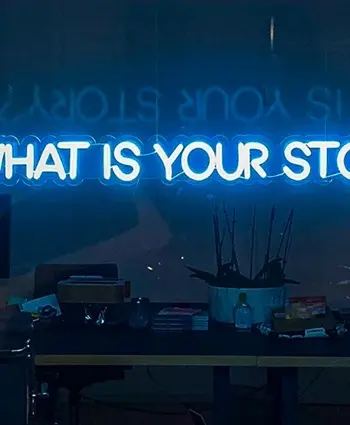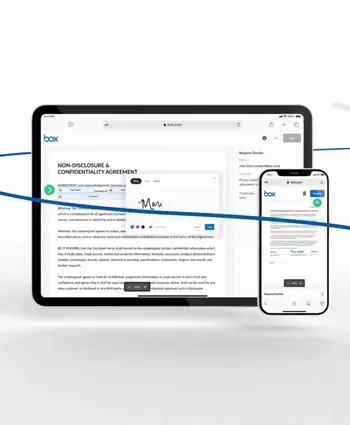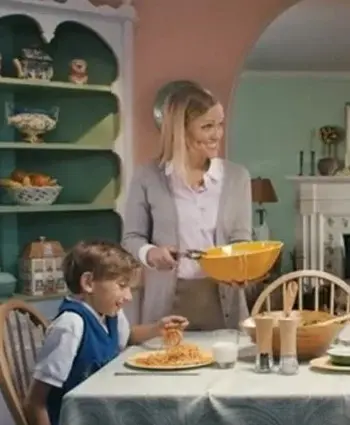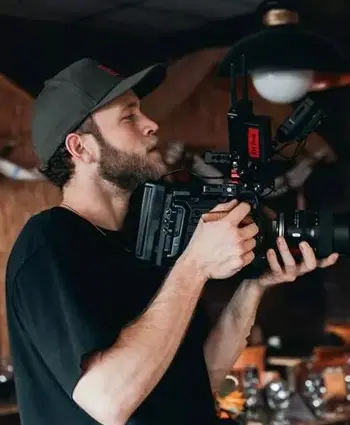Jonathan: Welcome to Beyond the Creative. Every episode we're exposing the daily conversations we have about campaigns we
think are interesting insightful or different dissecting reverse engineering and breaking down what they were trying to achieve. But this isn't just about us giving our opinions, each episode will ground those opinions against creative principles we use every day.
Chomoi: So if you're curious about marketing as a service behavioral design and the importance of audience insights you're in great company.
Jonathan: This is beyond the creative, our way of learning growing and ultimately fueling our never-ending quest for delivering creative that changes what people think feel and do.
0:48 - What is DISRUPTION IN MARKETING?
Jonathan: Welcome to the very first episode of Beyond the Creative! This first show's theme is all about
disruption in marketing. Something that's nothing new, it's been around for decades, or really since marketing began. It's all about grabbing people's attention, shocking people, getting eyeballs on ads, selling more products and getting more brand awareness.
It's like a never-ending game of chicken: as one brand pushes the envelope a little bit further, another brand has to up the game. And today, we're exploring how that works and where brands are taking disruption at the moment. [music]
1:24 - Campaign 1: Welcome to WeTransfer, Please Leave
Jonathan: So first up we've got "Welcome to WeTransfer, please leave" and this highlights how digital tools have become
a distraction from creative work, but that WeTransfer can play a role in helping people reclaim their time. Chomoi, you flagged this as potentially a disruptive campaign ad.
Chomoi: Happy to jump in on this one. So I think this one is disruptive because it's not your typical sales message. T hey're basically saying "here you are sitting at a screen, but actually, the magic happens away from our product". It's really unintuitive and I think on the on the face of it, it's quite brave messaging. It's a bold tone of voice and it's not really what you expect from a file transfer company, so from that point of view I think the actual way they come across in the scripting in the voice-over, yeah, it's pretty disruptive.
Jonathan: Yeah I'd agree, I think it's obviously not heavy on the sales message and it's kind of saying "get back out in the wild and find that source of inspiration that made you fall in love with being a creative in the first place" and that's, y eah that's cool. I think it's been done before. Yeah, it's interesting how disruptive or kind of controversial this is, but I guess for those people that haven't seen it, should we run the campaign? Let's run the ad. For those of you that are listening, you can pop over to our YouTube channel and check it out. Um but let's run the ad.
[Music] [Voiceover] "Have you ever thought about the other
you? The you that you felt truer to. What would you say if you saw your life wasting away stuck online inhaling content, exhaling time? But oh, the you that flew the coop to prove that life could move in any way you got to choose.
You left the screens looking for the life between the life you have now and the life of your dreams. You've found it there swirling twirling and the crisp fresh air. Everything you've read about, tweeted, liked, posted out. This is where it all comes from the real world that you can feel world.
And when this other one of you returned to see what it could do, you poured your heart into the keys as quick as possible to see what to keep and what to free. T hen once again, it was time to leave."
3:52 - Is this disruptive?
[Music]
Jonathan: Okay, so I think that the ad is really nicely executed. It's really quite beautiful. Some lovely cinematography, some lovely craft going into it. I can see how this would resonate with artists and creatives, but at the same time, I'm not sure it's that disruptive. It's almost like I can hear a voice of mother saying "come on now you've had too much tv and computer games go outside and play in the sun and kick a football about". It feels a little bit... is it patronizing or condescending?
Chomoi: I t's a bit disingenuous, isn't it? You know, an online platform saying "get away from the screen", but in fact, it's sort of undoing what they are trying to stand for. I mean I get that it's like... "well you know the magic happens somewhere else", but when we see brands like Apple, Google, Meta telling us to monitor our screen time, it's a message I think we're now quite comfortable and familiar with. So, I get when a brand tries to be responsible and look after our health and safety and our well-being, but then when you compare it to brands like Patagonia that take that responsibility message more seriously, I think it's very hard to match that quality. So when Patagonia says "don't buy this jacket", they've really gone to the endpoint on sustainable purchasing of clothing and wear and tear, but they back it up with all their eco credentials, and it becomes a much deeper message and a longer, wider campaigning platform.
Jonathan: Yeah, I think you hit the nail on the head by saying you've got to be fully committed, you've got to go all the way and it needs to be, excuse the pun, but, woven into the fabric of your brand, and think that hasn't been as well established for the WeT ransfer brand, so it still feels it doesn't go deep enough. I think it doesn't go to the core and the essence of the brand, so it doesn't feel truly authentic. I think this is the tension we're struggling with here, isn't it? It's like... does it go far enough? Does it go deep enough? O r does it feel kind of like a disposable campaign that could just run once?
[Music]
Jonathan: The important thing here is... we can look at the different principles of how you're going to persuade people, what you're trying to do with awareness brand marketing. I think this was based on research, wasn't it? I think WeTransfer did some research. T hey released an ideas report in 2018 that found that people were less creative when they were stuck in front of computer screens for long times. I think they were they were tapping into evidence-based insights which is really positive, yeah. It's just that question I've got that's running through is... is it quite hitting the mark? Was there another idea they could have led with different execution? P erhaps that would have felt more authentic. I think I just feel like I can see through it a little bit too easily.
Chomoi: Yeah it's that tone isn't it? U nderlying there, you sort of get this whole thing of... it's not about the files, it's not about the computer, it's about life. Y ou can see how they got there from the research, but it's not a really very impactful thing to say. Even though you look at the YouTube comments underneath and people are like " this is beautiful".
I mean as you say it's poetic, it's beautiful, but could they have done that with a three-second clip? D oes it need to be a 60-second poem? And as you say, is it doing anything as a campaign? What's the call to action? How do I get involved? How does it impact my behaviour? And I think if you look at the classic rules of disruption, this is where I would want to push the creative team who did this, to push this idea further, because disruption says: "well we're going to do something completely unexpected" or "we're going to do something very different from our competitors" and fundamentally, the message here is "it's not just about the files, it's about the creative idea that's important, that happens elsewhere". And you look at what competitors like Dropbox are doing... they're kind of playing in the same space. They're saying "it's the memories, it's the life stored within the files, stored within our system". So, from that point of view, if we're saying is it different? Does it stand out? It actually becomes a not very ownable message. It becomes quite easy to emulate and easy for the competition to copy. So yeah, it's beautifully executed. But again, from a strategic point of view, i'm not sure it does very much for brand building. And that's obviously what we're here to do, isn't it?
Jonathan: And also I think they're kind of in a way harking back to their origins which was a simple transactional "let's send a big file from A to B" which was a problem. Whereas Dropbox, like you were saying, is owning that kind of... "it's a place for keeping precious things", which you can also share, so I think that's also potentially part of the problem. And they do reference at the end of the ad their other products, but the fact they're leading with "this is just transactional", it's almost like an email, it doesn't feel... not necessarily saying that the files you're sending are special... it's just that it feels like a disposable tool rather than an ecosystem that you're buying into. So what behaviours do you think they're trying to affect or impact with the campaign?
Chomoi: Well, you touched upon the research and I think that's a really good place to start because creatives struggling with creativity, or creatives trying to increase their productivity or dig deeper for ideas is a really interesting space. And if they're saying that with computer screens, it's a bit of a blocker, it's a barrier, it gets in the way of the creative process, then that leads me to think that you could help creatives. I don't have the answer, but is it about setting up a camp on the top of a mountain and a retreat where creators would go and disappear for like three weeks and immerse themselves in their work? Immerse themselves in workshops? And share the experience together? That sounds kind of interesting. Sort of a marketing as a service type offering, which actually moves you and actually moves it on. Help s these guys out a bit.
Jonathan: That's a really good point, actually. Yeah if they were creating a bit of a movement, if they were... encouraging people to sign up for something. Not the product, but to belong to... create a sense of belonging... to create a sense of community... I think there's something that could be done there. So actually maybe from what I said earlier this could be campaignable if it was connected to that. It wasn't in this case, but I can actually see a potential follow-up where it's like: "shut the computer and come join this real-world community of other inspirational creatives."
Chomoi: Yeah that's really nice, and also looking at this from a point of view of entertainment, I also wonder whether it's entertaining? It's there for a moment... it gives you a warm feeling. In the comments people were saying things like: "this is so nice. This is lovely." but there was one comment that actually said "uh... this is a strange way to announce that WeTransfer is shutting down" and poking fun at it. Yeah so as a piece of entertainment as well, it's nice but it is 60 seconds. And is all of this effort worth a few nice comments on social? There, I wonder about the effectiveness of it as a piece of entertainment.
Jonathan: One of the things we want to do with this podcast is not just give our opinion but try and come back to some principles of developing brands and marketing and I think The Humankind Scale is a great model for us t o use to rank these bits of creative. Not everyone will have heard of The Humankind Scale, would you mind just explaining what it was all about?
12:21 � Campaign 1: The Humankind Scale
Chomoi: It's simple scale from 1 to 10, where 10 is the best you can possibly do. 10 is world-changing creative. And 1 is really work that shouldn't exist in the world, you know, it's destructive. So, I like to think of really trying to ignore like 1 to 4. 5, you want to be in the middle at least and start there. And 6 is an intelligent idea. 7 is an inspiring idea that's beautifully crafted. 8 changes the way people think and feel. 9 changes the way people live. And 10 changes the world. So I have to think about whether it's an idea that... as a piece of creative... has maybe saved someone's life. T hat would be an ultimate KPI for work.
And when we look at this idea, my gut tells me it's hovering around a 5. J ust that it's very clear what their purpose is as a brand, they've got their tone of voice nailed with this piece, their message is pretty clear. So it does kind of say what they stand for, "we stand for creativity and ideas and inspiration and we stand against overuse of screen time and being stuck in front of the screen watching loading bars". So that kind of makes sense for the brand. So yeah, I kind of pegged it at a 5.
Jonathan: Yeah I'd agree with you. I think 5 is spot on. People do know the brand's purpose... I'm slightly hesitating because I'm like... is it clear what the brand purpose is or in this campaign is it just that they're encouraging people to get back out into the wild? But I think there's enough in the message there of the kind of the purpose and the values of the brand coming through. I don't think it's quite.... is it that intelligent? Not sure really. I don't think it quite gets there. So I think we're probably in agreement, 5 is the right score. And this is a tough scale, you know! It's not easy, right? Climbing this ladder. I think 5 is probably fairly average, good, it's a solid piece of communication, and it's a solid piece of brand work.
Chomoi: It is quite a hard scale. And when we started talking about this piece of work, I really really liked it. It really felt disruptive, but I think when you start to sort of take a step back and analyze it as we have... you know we've talked about behavioural design, we've talked about marketing as a service, we talked about entertainment, and actually, it's quite hard when you look at it through those those lenses and those filters. And then when you apply the scale, you see how traditional marketing starts to fall by the wayside. It doesn't work as well as harder working campaigns that tick the behavioural design box, or tick the marketing as a service box, or tick the marketing as entertainment box. So yeah, I feel harsh giving it this score. But this is really a sort of journey for us, isn't it? Of learning, honing our techniques, and always trying to do better work.
15:39 - Campaign 2: Coinbase's Super bowl Ad
[Music]
Jonathan: Okay, so the second campaign we're gonna be looking at today is the Coinbase Super Bowl ad from 2022
just from a few months ago. And this is the famous QR code bouncing around the screen, this was definitely bold and different, it was disruptive. I mean, it went viral and that's normally a sign of something that's different. A nd the Super Bowl is a... doesn't everyone just look to the Super Bowl for what ads are going to be coming? And there's been some classics over the years, but this was probably a media first in terms of something so minimal bouncing around the screen for 60 seconds at the cost of... I think it was 16 million dollars? And it worked! You know, in terms of driving curiosity it crashed the Coinbase website it drove so many people. So many people scanned that QR code, curiosi
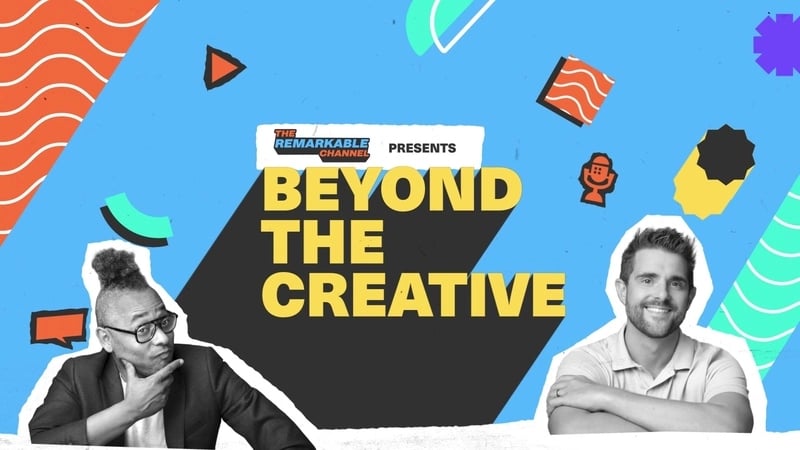

![How to Write a Video Brief in 7 Easy Steps [Free Video Briefing Template]](https://www.venturevideos.com/hubfs/Download%20images/video%20production%20brief%20template%20optimised.webp)
